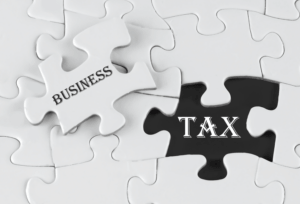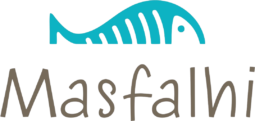
A manager can use cost accounting to estimate the efficiency of their company. Cost accounting measures an organization’s operations, efficiency, and profits based on the costs involved. It allows companies to track expenses and profits, making it easier to manage finances and stay competitive. This assumption is used with other cost accounting principles, such as standard costing, to create a complete picture of how a company spends its money.
Monitor & Control Expenses
In a process cost system, the manufacturing costs are averaged across all products that pass through the production process. Once businesses have these two numbers, they can simply divide the fixed costs by the contribution margin to determine their breakeven point. Knowing the breakeven point is critical for businesses because it helps them understand how much production is necessary to make a profit. Its purpose is to ensure that resources are used efficiently and effectively to create maximum organizational value.
Can Cost Accounting be Used in Service Industries?
As a result of these benefits, cost accounting is an essential tool for any business seeking to improve its financial stability and performance. Additionally, the company considers tax implications, leveraging deductions and credits related to production activities to optimize tax liability and reinvest resources. By adhering to accounting standards like ASC 842 for lease accounting, the company ensures accurate financial reporting, enhancing transparency and credibility with stakeholders. You may have recognized that there is crossover throughout these categories (for example, product costs may be considered direct costs). These categories are not exclusive, and the ones you use ultimately depend on what cost accounting method you’re using. The lean accounting methodology is highly complex as it involves looking beyond simple financial costs and requires assigning values.
Target net income- Cost Accounting
- Cost accounting formulas can be a powerful tool for managing a business effectively when used correctly.
- The reason is that some accounting software will not put the current year’s net income into the Retained Earnings account until the accounting year is finished.
- In addition, these methods of cost accounting also ignore fixed costs (costs that remain constant regardless of changes in production volume, such as monthly office rent or insurance premiums).
- Cost accounting is a great tool to improve the profitability in any business.
- The agent informs him that $1,200 will provide insurance protection for the next six months.
- Cost accounting provides managers with timely cost information to aid decision making.
Cost accounting is a process that involves recording, analyzing, and reporting a company’s expenses cost accounting basics in detail. Unlike financial accounting, cost accounting is an internal process used only by company management to identify ways to improve the efficiency of their operations and reduce spending where possible. Frequent analysis offers insights into the profitability of different products, services, or projects.
- For example, to manufacture a mobile phone, the company needs to purchase raw materials.
- Further you can also file TDS returns, generate Form-16, use our Tax Calculator software, claim HRA, check refund status and generate rent receipts for Income Tax Filing.
- The cycle begins with recording data on raw materials, labor, and overhead costs.
- For example, if a company produces 100 widgets, the variable cost of producing those widgets will be lower than if the company produced 10,000.
The accountant might match $4,000 ($20,000 ÷ 5 years) of Depreciation Expense with each year’s revenues for five years. After five years—the end of the van’s expected useful life—its carrying amount is zero. Marilyn assures Joe that he will soon see a significant link between the income statement and balance sheet, but for now she continues with her explanation of assets. At his first meeting with https://www.bookstime.com/ Marilyn, Joe asks her for an overview of accounting, financial statements, and the need for accounting software. Based on Joe’s business plan, Marilyn sees that there will likely be thousands of transactions each year. She states that accounting software will allow for the electronic recording, storing, and retrieval of those many transactions.
- Even though standard costs are assigned to the goods, the company still has to pay actual costs.
- Lean accounting is a cost accounting specifically designed for companies that utilize lean manufacturing or other lean business practices.
- Recording revenues when they are earned is the result of one of the basic accounting principles known as the revenue recognition principle.
- While there is no specific experience required to take the CMA exam, it is recommended that candidates have at least two years of experience working in an accounting or finance-related field.
- These decisions may include increasing production, changing pricing, or adding new products.
Target Costing- Method of Cost Accounting

In this blog post, we will discuss cost accounting, its limitations, and the basic principles governing it. It measures how much of each dollar of sales is left after deducting all costs. The revenue is the amount of money that the business receives from selling its products or services. An Accounts Payable (AP) system is one of the most popular cost accounting adjusting entries systems.
- Variable costs are costs that change in total in direct proportion to the level of output or activity.
- To decrease a liability or equity, you debit the account, that is, you enter the amount on the left side of the account.
- Joe asks Marilyn to provide another example of a cost that wouldn’t be paid in December, but would have to be shown/matched as an expense on December’s income statement.
- Additionally, cost accounting can help managers identify areas where costs are reduced, leading to increased profits.
- This approach generates financial statements that are less optimistic, hence the name conservative.

Summarizing these costs can give greater clarity about the overall operational efficiency of the business. While fixed costs stay the same when added up, the fixed cost per unit decreases as production volume increases, leading to economies of scale. It provides an overview of the foundational concepts and processes in accounting. When the cost is fully consumed and no future monetary value could be measured, it is called expired cost. Suppose the expenses incurred in an accounting period do not have any future value, then it is called an expired cost. There may be different types of cost drivers such as number of units or types of products required to produce.
Advantage #7: Cost accounting assists in informed budget and investment decisions

Cost accounting helps in taking strategic decisions to manage a company’s expenses. Traditional methods of cost accounting are based on ‘standard’ costs and historical data. As said above, costs do not remain constant and using past/historical data to calculate the current cost of production can increase the chances of the results of cost accounting being inaccurate. In addition, there is no uniform way of determining the standard costs that cost accounting methods, such as standard costing, rely on. When cost standards are inaccurate, the final cost data and analysis can also be inaccurate. These comparisons offer valuable insights into cost trends, cost efficiencies, and the organization’s overall financial performance.
#10 Principles of Accounting, Volume 1: Financial Accounting
An accounting method wherein revenues are recognized when cash is received and expenses are recognized when paid. The cash basis of accounting is usually followed by individuals and small companies, but is not in compliance with accounting’s matching principle. Joe also needs to know that the reported amounts on his balance sheet for assets such as equipment, vehicles, and buildings are routinely reduced by depreciation.


